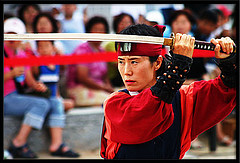The area of a novel that follows climax brings renewal. Yet writing this part of the story gets tricky.
Rolling towards the finish line authors can easily lose control of the narrative. We must remain upon the horse of our story.
Climax has delivered a delayed and second crisis a second opportunity for experiencing transformation, what some might call the aftershocks of the major earthquake of the peak crisis bringing everything to its head.
In this way novels can be seen to have three major crises or turning points–revelations or reversals of fortune–from which others hurricanes or twisters of change spin off.
The first revelation presents itself in the initial shake-up, dissolving the status quo. This rises from an unresolved problem rooted in back-story. This provides the story’s present dilemma. This initial change that overturns the homeostasis of the life of the protagonist takes place during the opening of a novel or story.
Then comes the arc of action where the protagonist meets with her or his archenemy, that from which she or he has been running or pursuing the length of the story.
Then arc of action is the point of crisis.
The climax of stories with a delayed arc of action, crisis, may seem but an extension of the previous penultimate moment.
Be aware that it is not.
While the battle of peak crisis dispenses the basis for thorough change, the scenes of climax evidence the thoroughness of this transformation.
Thus renewal offers a period of rest, from both the physical battle of crisis and the mental taxation of climax, exhibiting choices and making decisions that demonstrate the internal shift of emotions and thinking that accompanied the survival and triumph of the battle fought at crisis.
The sword, whose metal was tried, and forged amid the flames of crisis, after which the choices made during climax hammer it into sharpness, experience coolness when placed in the healing waters of renewal.
From this rises the steam of compassion
Likewise renewal bestows a bounty of wisdom and understanding upon the protagonist. The roots of this gift lay in the decisions made during climax. The central character has grown internally.
From this flows grace and mercy–the essence of redemption.
The anger of battle combined with right judgment of climax yields the sagacity of experience bound in mercy.
Steam rises from the waters into which the blade, that once smoldered red-hot and was then meted into sharpness, is placed.
This blade symbolizes the human soul kneaded into consciousness. The mind, in realizing its limits, has taken a back seat to the heart.
Compassion, forerunners to redemption and atonement emerge from a sense of knowing self, most particularly those places where demons lurk– ghouls and goblins of the mind that when embraced become our greatest allies.
To know one’s enemies to know one’s self.
To know and love one’s self is to understand others.
So often we are our own worst enemies.
Committed and true writers/authors beckon and befriend these antagonists each time we write.
While the words we pen or type move towards the arc of conflict, our ultimate aim in bringing them to paper or the blank screen of the computer is to receive the steam of compassion held in renewal following climax.


Pingback: Of Swords, Inner Demons and the Waters of Renewal… « anjuellefloyd